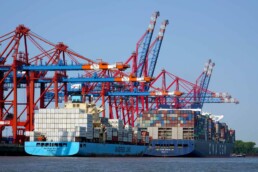Dealing with E-commerce Inflation
Prices are going up on almost everything. This pattern began during the COVID-19 pandemic and has continued without many indications that the tides will turn soon. According to the Adobe Digital Economy Index, e-commerce prices as of July 2021 were up 3.1% year-over-year. Before this, e-commerce consumers enjoyed a deflationary environment, with prices declining at 3.9% YoY. E-commerce retailers have to pivot their strategies, pricing, and fulfillment to help minimize the impacts of inflation; as consumers’ discretionary spending dries up, the competition for the remaining dollars increases. Dealing strategically with e-commerce inflation is necessary to ensure survival.
What is causing e-commerce inflation?

The COVID-19 pandemic triggered an imbalance in supply and demand. As consumers were quarantined and unable to spend money on experiences, they turned to physical products online. Demand for gym equipment, entertainment centers, and furniture soared as people were stuck at home—this overburdened suppliers.
The pandemic caused a massive shortage in the number of shipping containers. This was caused by the increased demand for goods and the lack of port staff, ships, and containers to transport products. Sea freight continues to cost more than pre-pandemic prices.
Lastly, Chinese suppliers are still struggling to meet production demand. Lockdowns and restrictive policies have led to significant delays in getting raw materials and manufactured goods out of the country. Many savvy e-commerce brands have diversified their supply chain by partnering with more local vendors. However, China is still the world’s largest manufacturing producer, responsible for just over 28% of the global output.
Effects of Inflation

An inflationary period is marked by an increase in the cost of goods and services that decreases the purchasing power of consumers and companies alike. In other words, a dollar doesn’t get you what it did yesterday. What specific price increases and reductions in spending are we experiencing?
Price Increases
- Increased cost of raw goods and materials
- Increased labor costs
- Increased shipping costs
Consumer Spending Changes
- Overall spending reduction
- Drop in discretionary spending
- Shift to generic brands
- 75% of consumers are spending less due to inflation
- The top three industries experiencing a drop in sales – Women’s apparel, Men’s apparel, and Electronics
- Increase in recommerce
Solutions to Deal with E-commerce Inflation

Raise prices
As prices rise for goods, services, labor, and shipping, one of the quickest and most obvious solutions is to pass the price increases to customers. It is vital to decide how and when to implement a price increase strategically. Consumers are not heartless, and most expect a fair price for their product and a reasonable profit for the seller. If you must increase your prices to maintain profitability, make sure you:
- Communicate openly and honestly – let them know why your pricing needs to increase.
- Determine fair pricing by researching competitors and checking for underpricing in existing price models
- Cut costs where possible.
- Consider offering a smaller amount for the same price. Some customers would rather have fewer products than have to pay more.
Keep a safety stock
Avoid stockouts and extended supply chain delays by overordering products that are consistent sellers. Work on building up safety stock and keep a six-month supply of goods. The quantities you can purchase today might be more than what you can get for the same price next year.
Manage cash flow
Small businesses with the most working capital at the end of an economic downturn end up on top. Prioritize revenue generating while cutting costs. Now is the time to apply for financing. Having a business line of credit available before you NEED it can make the difference between growing or drowning.
Diversify your supply chain with local vendors
Because Asia is still struggling with production and fulfillment, now is the time to find local vendors and suppliers. The closer a supplier is to your customer base, the less you will need to spend on shipping. Local manufacturers who were cost-prohibitive might be more competitive in this environment. Inflation has hit shipping carriers hard, and they are passing along the fees to customers through fuel surcharges and labor charges. When dealing with e-commerce inflation, every penny counts.
Partner with a 3PL
While it might not be an obvious strategy to deal with inflation, partnering with a 3PL can help. 3PLs can help negotiate better shipping costs and options due to their high-volume discounts with major carriers. Furthermore, if they are like Falcon Fulfillment, they can help implement an automated inventory management process to avoid stockouts. Lastly, with flexible warehousing available, you can store safety stock with ease.
Beginner’s Guide to Third-Party Logistics (3PL)
The world of e-commerce is always changing, therefore understanding the roll of Third-Party Logistics is integral to keeping up. In light of this our beginner’s guide to third-party logistics (3PL) will delve into the essential aspects, offering insights into fulfillment services, warehousing, and much more.
Read More…
Inflation isn’t going to return to “normal” anytime soon. According to Business Insider, inflation is expected to improve in 2023, although gradually, and the first indicator of a more steady supply chain will be shipping prices. Traditionally, e-commerce businesses were immune to inflationary environments, but that isn’t the case anymore. To deal with e-commerce inflation well, implement the strategies listed in this article and consider partnering with Falcon Fulfillment.





